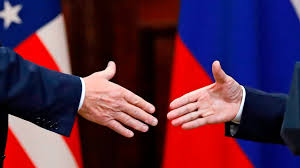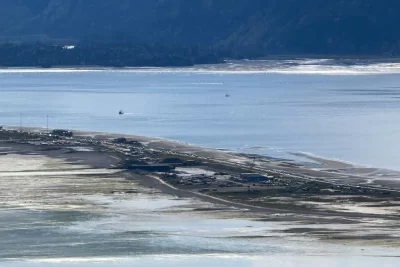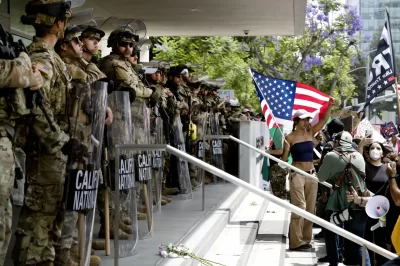
ANCHORAGE, Alaska — When U.S. President Donald Trump and Russian President Vladimir Putin meet in Alaska on Friday, it will be the latest chapter in the 49th state’s long history with Russia — and with international tensions.
Siberian fur traders arrived from across the Bering Sea in the first part of the 18th century, and the imprint of Russian settlement in Alaska remains. The oldest building in Anchorage is a Russian Orthodox church, and many Alaska Natives have Russian surnames.
The nations are so close — Alaska’s Little Diomede Island in the Bering Strait is less than 3 miles (5 kilometers) from Russia’s Big Diomede — that former Gov. Sarah Palin was right during the 2008 presidential race when she said, “You can actually see Russia from land here in Alaska,” though the comment prompted jokes that that was the extent of her foreign policy experience.
Alaska has been U.S. territory since 1867, and it has since been the location of the only World War II battle on North American soil, a focus of Cold War tensions and the site of occasional meetings between U.S. and world leaders.
Here’s a look at Alaska’s history with Russia and on the international stage:
Russian trappers and Seward’s Folly
The fur traders established hubs in Sitka and on Kodiak Island. The Russian population in Alaska never surpassed about 400 permanent settlers, according to the Office of the Historian of the U.S. State Department.
Russian settlers brutally coerced Alaska Natives to harvest sea otters and other marine mammals for their pelts, said Ian Hartman, a University of Alaska Anchorage history professor.
“It was a relationship that the Russians made clear quite early on was not really about kind of a longer-term pattern of settlement, but it was much more about a short-term pattern of extraction,” Hartman said.
Meanwhile, Russian Orthodox missionaries baptized an estimated 18,000 Alaska Natives.
By 1867 the otters had been hunted nearly to extinction and Russia was broke from the Crimean War. Czar Alexander II sold Alaska to the U.S. for the low price of $7.2 million — knowing Russia couldn’t defend its interests in Alaska if the U.S. or Great Britain tried to seize it.
Skeptics referred to the purchase as “Seward’s Folly,” after U.S. Secretary of State William H. Seward. That changed when gold was discovered in the Klondike in 1896.
World War II and the Cold War
The U.S. realized Alaska’s strategic importance in the 20th century. During World War II the island of Attu — the westernmost in the Aleutian chain and closer to Russia than to mainland North America — was captured by Japanese forces. The effort to reclaim it in 1943 became known as the war’s “forgotten battle.”
During the Cold War, military leaders worried Soviets might attack via Alaska, flying planes over the North Pole to drop nuclear weapons. They built a chain of radar systems connected to an anti-aircraft missile system.
The military constructed much of the infrastructure in Alaska, including roads and some communities, and its experience building on permafrost later informed the private companies that would drill for oil and construct the trans-Alaska pipeline.







